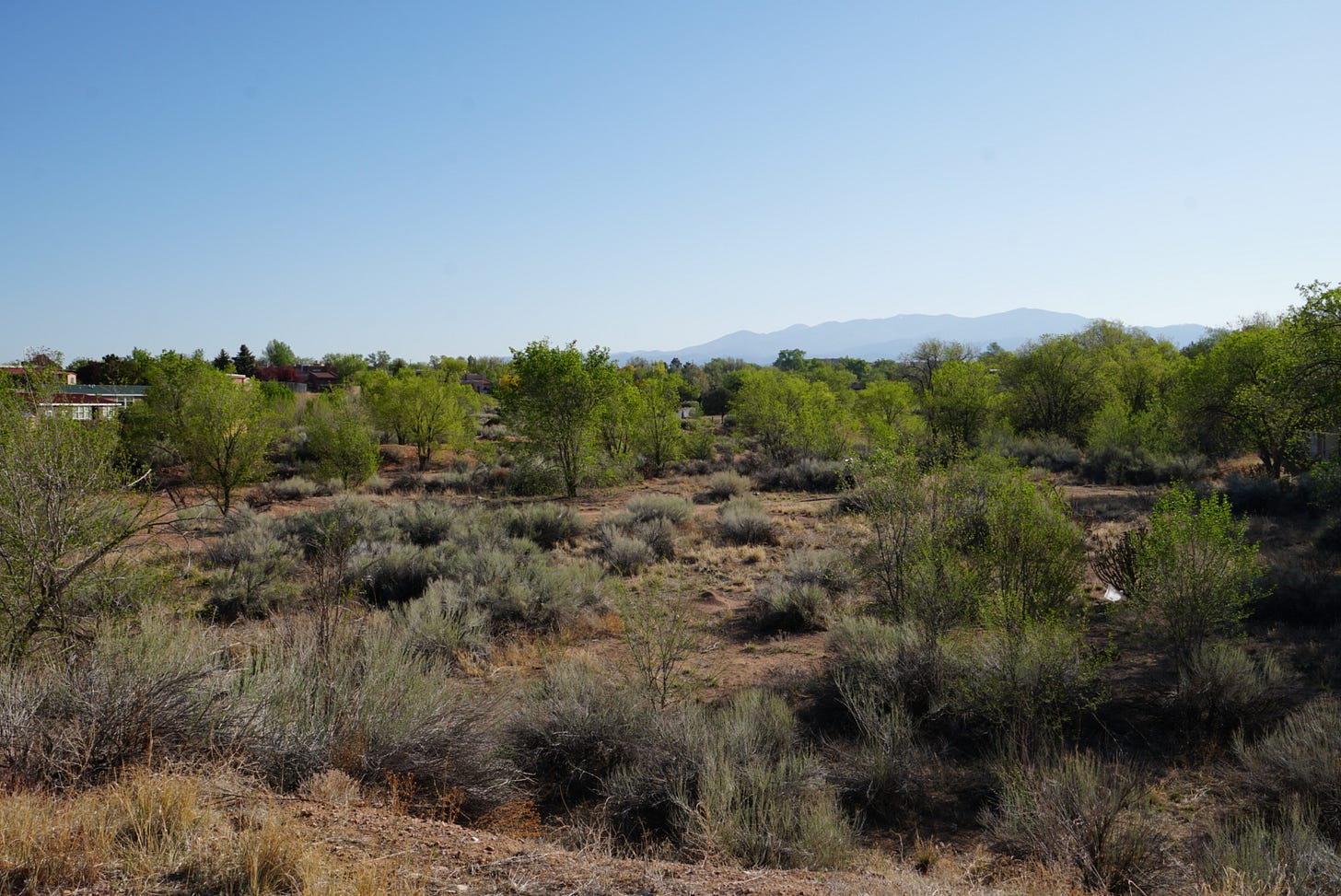On migration and measuring biodiversity
About a mile south of our house is an arroyo that begins in the foothills before cutting through a mostly residential corner of the city and winding its way west to merge with Cienega Creek. When we arrived not long ago, it was winter, and there were only a few species of birds we’d regularly see there: white-crowned sparrows and juncos, canyon towhees, the odd ladder-backed woodpecker. Now—in mid-May, the height of spring migration—things have changed. Though still relatively species-poor in the grand scheme of things, birding in the arroyo has become much more interesting. There are MacGillivray’s, Wilson’s, and orange-crowned warblers; Cassin’s kingbirds; hermit thrushes. Some of these species may just be passing through on their way elsewhere, while some may stick around and breed. But for the moment, the arroyo is full of (feathered) life.
I’ve been thinking about this ephemeral diversity in the light of a comment Zach Wurtzebach made while we were preparing for last week’s webinar on 30 by 30. Zach pointed out that prioritizing lands for protection is difficult, and that seemingly objective criteria like biodiversity can be anything but. Though I had a momentary impulse to object, he was obviously right, and making an important point: in practice, the quantification of nature involves countless human choices. To briefly illustrate this, let’s consider some of the ways in which biodiversity is actually measured.
Right off the bat, it’s helpful to ask a more focused question. Because biodiversity is a concept that can be applied to different scales of biological organization, we need to decide whether we care about species, or families, or habitats, or genes, or whatever. After we’ve decided what we’re tallying up, we still have to decide how to tally it. We might simply want to know how many species there are in the arroyo, a metric unsurprisingly called species richness. But maybe we also want to take into account how many individuals of each species there are, because if 90 out of 100 birds from the 10 different species we see are robins, it will mean something different (for how species interact, for conservation significance, for birdwatching pleasure) than if only 10 of them are. To do so, we’d want to use something like the Shannon index instead. Yet the Shannon index can give us an inaccurate picture of how diversity changes over time (throughout the year in the arroyo, perhaps), so maybe we should actually use the geometric mean index 𝐺𝑗—itself an imperfect and incomplete representation of a multidimensional abstraction.
At the risk of being redundant, the upshot here is that effectively applying measures of biodiversity in research requires some thought, and that different measures may give you contradictory answers to the question of how biodiverse a given place or landscape is. These contradictions can make conservation planning challenging, but provide the sort of tension that generates interesting science. For example, a recent paper on patterns of bird and plant diversity in lowland rainforest in New Guinea found that while diversity at any given site was extremely high (“alpha” diversity), there was very little change in the assortment of species present at different sites, even if they were far apart (low “beta” diversity). This high / low pairing isn’t the only possibility, but you could speculate that sometimes different combinations of these metrics reflect interesting biology or other constraints—e.g., maybe if you have enough species, some of them will have large ranges, which will put a ceiling on beta diversity.
Which brings us back to the arroyo, and migration. Even the sophisticated application of metrics like and alpha and beta diversity can’t easily capture the interdependency of diversity in different places; the idea that May bird diversity in an arroyo in New Mexico is linked to June bird diversity in Canada or January bird diversity in Oaxaca. Articulating these connections—or determining the overall conservation importance of a landscape—requires a diverse toolkit and flexible sense of what you’re assessing. We would do well to bind these concepts to value systems with care.


